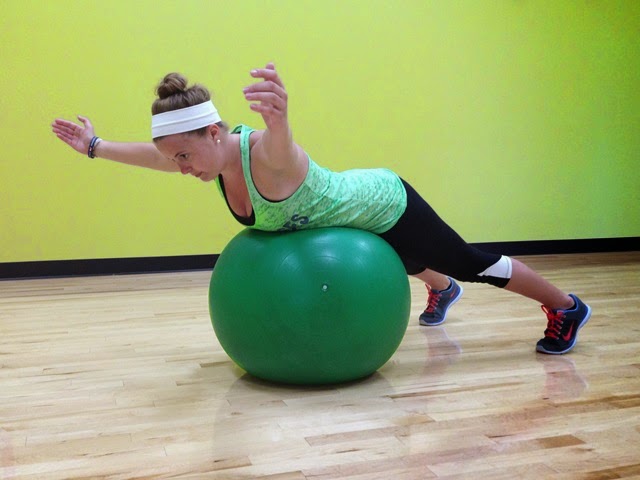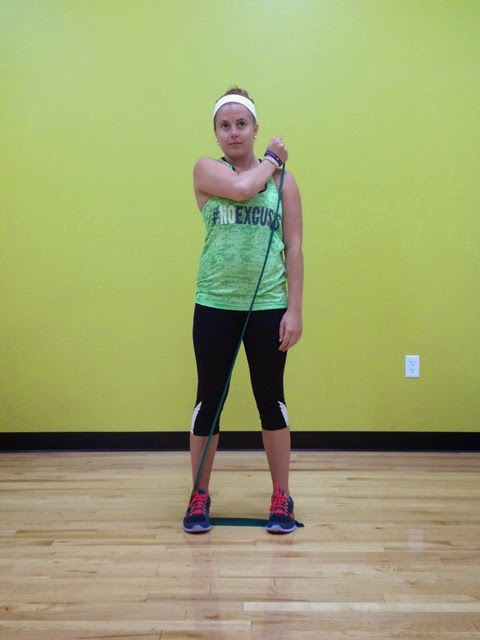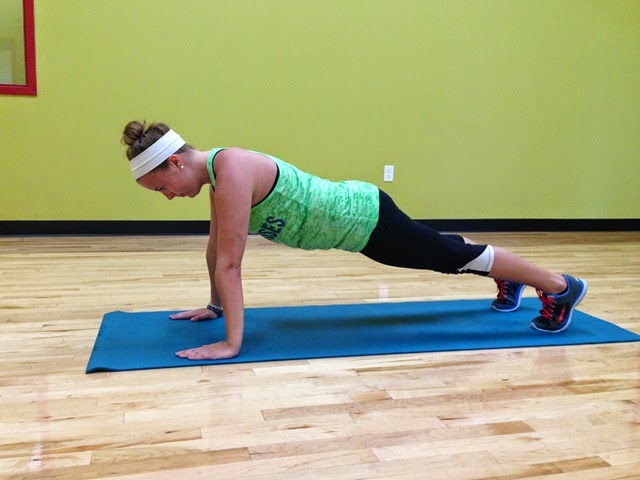no question that the human body is designed to move, but with the rise in desk
jobs, we spend more time sitting than moving. And with that, we come across a
number of problems: lower metabolisms, low back pain, tight hip flexors,
slouching posture, and weak cores among them.
some of the work-related issues in the gym with these moves:
Hunching over your desk/keyboard
This is a huge
cause for much of the stress we hold in our shoulders and the poor posture we
experience.
You can do these with low weight or no weight, with or without a hold, and with
your palms in a number of positions to challenge your muscles. The key is to
pinch your shoulder blades and draw them down your back as you lift your arms
through the patterns. This activates the rhomboids rather than the trapezius
(which is already well developed in tense shoulders!). Try one to two sets of
ten to start and notice how much straighter you stand up after!
D1/D2 with a band:
These are diagonal patterns that work the shoulders and back complex and can
be done in a number of different directions. Stand with the band in your right
hand and under your right foot. Bring your hand across your body in a diagonal
pattern up towards your left shoulder and return it back to your right side.
This is a D1 pattern. You can also do it in reverse, with the band attached up
high by your left shoulder and in your right hand, and drawing
it down across your body. Sometimes we call these “Wolverines”
because it’s just like how Hugh Jackman whipped his claws out.
For
D2 patterns, stand with the band under your left foot and in your right hand,
with your hand by your left pocket. Draw it up across your body diagonally as
though you’re unsheathing a sword and then return it across your body to your
pocket. Again, you can do this move in reverse, attaching the band up high and
drawing it low.
Rowing with a band:
For this, hold two ends of a band
that is wrapped around a pole in each hand, pinch your shoulder blades down and
back, and draw your elbows towards the wall behind you while keeping your
forearms parallel with the floor.
Stretch it out:
Try a prayer stretch (also called child’s pose in yoga) to stretch out your
shoulders and back. Start in a table-top position (on hands and knees, with
your hands directly under your shoulders and knees directly under your hips)
and sit back on your heels. If needed, you can walk your hands out a bit more
in front of you once you’re seated back. You can also try this with a rotation,
where you start with your hands off to one side, and then sit back. You’ll feel
it more along one side.
You can also try an upper trap stretch. While standing up straight and looking
straight ahead, bring one ear towards your shoulder, then to the other side. To
increase the stretch, push the heel of your hand down towards the ground on the
side opposite the ear (so if you’re dropping your left ear to your left
shoulder, push your right hand towards the ground).
A good stretch to loosen up your chest and shoulders is the doorway stretch.
Stand in a doorway with your arms bent and step into it. You can change the
angle on this one, depending on which fibers are tightest.
Tight Hip Flexors/Low Back Pain
A little while back, Drew
wrote a great article on stretching out hip flexors that become tight from
being in a shortened position (as they are when we’re sitting). Check it out here.
Core
I’m sure you’ll love me for saying this, but planks are some of the best
exercises to strengthen the entire core. There are a TON of ways to do them to
keep them interesting and fun (go ahead, ask me sometime!) but the best way to
start? Try modified planks. These are just like regular planks, but your knees
are on the ground instead of your feet, shortening the work load and allowing
you to really focus on your form. When you get comfortable with those, you can
progress to regular planks and side planks and increase your time! Just make
sure you keep that form perfect.














